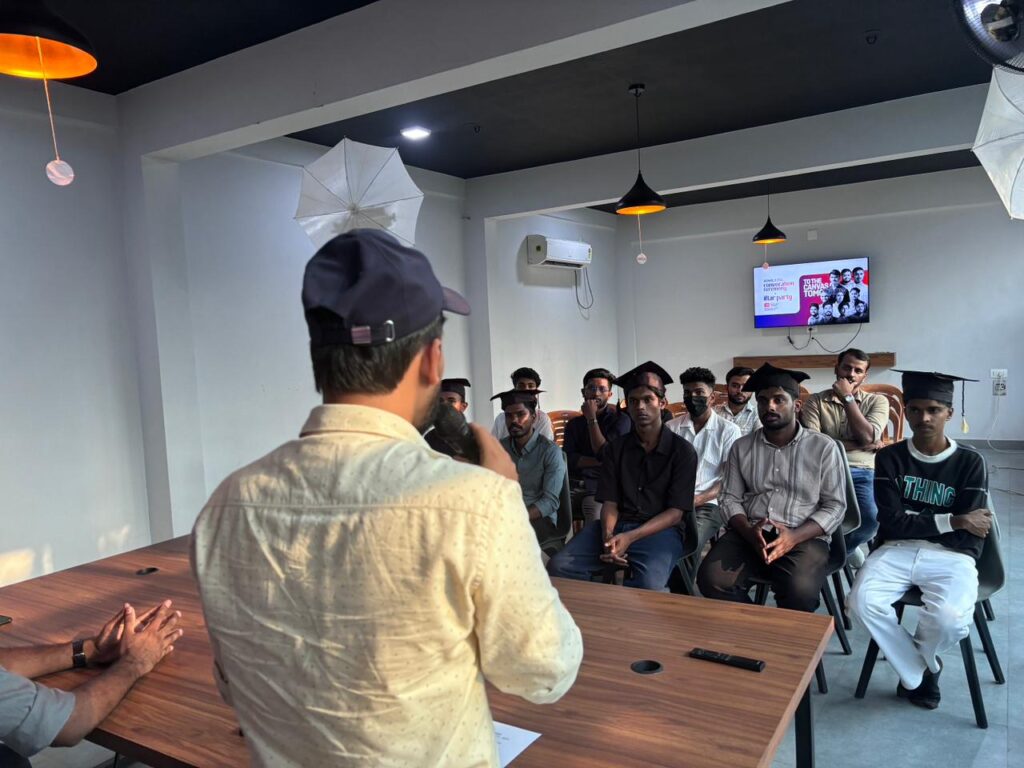
Introduction
In today’s fast-paced digital world, traditional learning methods often fall short when it comes to preparing students for real-world challenges. That’s why Adwils Media School adopts a hands-on approach to teaching that bridges the gap between theory and practice. This approach is particularly beneficial for fields like graphic design and UI/UX, where practical application of skills is essential for success. In this blog, we will explore how Adwils Media School’s hands-on learning methodology truly makes a difference in shaping future professionals.
1. Project-Based Learning from Day One
At Adwils Media School, students dive into project-based learning from the very beginning. The philosophy is simple: the best way to learn is by doing. Instead of just discussing design theories, students actively participate in creating user interfaces, crafting logos, and working on real-life design challenges.
This form of active learning helps students internalize concepts better and allows them to experiment with different techniques, software tools, and design styles. By engaging in project work early on, students develop a practical understanding of the industry and become more confident in their abilities.
2. Real-World Exposure
Adwils Media School prioritizes giving students exposure to real-world design projects. Partnering with businesses and organizations, the school offers students the chance to work on live briefs and solve actual design problems. This industry engagement helps students understand client needs, deadlines, and the collaborative nature of design work.
Moreover, students leave Adwils Media School with more than just a degree—they leave with a portfolio that showcases their real-world projects, setting them apart from the competition when entering the job market.
3. Mentorship from Industry Experts
One of the key differentiators at Adwils Media School is the opportunity for students to learn directly from experienced professionals. Each student is paired with a mentor who has substantial experience in the design and UI/UX fields. These mentors offer guidance on projects, provide feedback, and share valuable insights into industry trends and best practices.
This mentor-mentee relationship allows students to learn beyond the classroom, offering them a holistic perspective of what it takes to succeed in the creative industry. The hands-on learning experience is greatly enhanced by the personalized mentorship that every student receives.
4. Access to Cutting-Edge Tools and Technology
In the design world, proficiency with the latest tools and technologies is essential. Adwils Media School provides access to state-of-the-art design labs, software, and tools that are commonly used by professionals. This means that students are not just learning concepts—they are mastering the very tools they will use in their careers.
With the latest versions of industry-standard software, such as Adobe Creative Suite and various UI/UX prototyping tools, students are well-equipped to excel in any professional design setting. Being proficient with these tools before graduating gives them a significant competitive advantage.
5. Creative Problem Solving
Creativity is at the core of any design career, and Adwils Media School nurtures this through its hands-on projects. Students are often challenged with real-time design problems that require innovative thinking. By working on practical tasks, students are encouraged to think outside the box and come up with unique solutions.
This problem-solving focus helps students become adaptable and versatile, which is crucial in an industry that constantly evolves. Whether it’s crafting an intuitive user interface or designing a compelling visual identity, creative problem-solving becomes second nature to Adwils students.
6. Building a Professional Portfolio
The ultimate goal of hands-on learning at Adwils Media School is to prepare students for the real world, and one of the most important outcomes is a well-rounded professional portfolio. Throughout their studies, students work on projects that are directly applicable to industry needs.
This portfolio not only showcases their technical abilities but also their creative flair and problem-solving skills. For many employers, this portfolio becomes a deciding factor in hiring decisions. Students graduate with more than just theoretical knowledge—they leave with a collection of practical work that reflects their talent and readiness for the industry.
